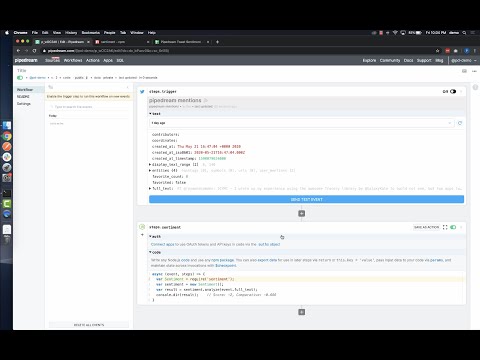What do you want to automate
with Ragic and Google Sheets?
Prompt, edit and deploy AI agents that connect to Ragic, Google Sheets and 3,000+ other apps in seconds.
Trusted by 1,000,000+ developers from startups to Fortune 500 companies
Popular Ways to Connect Ragic with Google Sheets#
Popular Ragic and Google Sheets Triggers#
Emit new event when a record is created. Instructions on creating webhooks here
Emit new event when a record is updated. Instructions on creating webhooks here
Emit new event each time a comment is added to a spreadsheet.
Emit new event each time a row or rows are added to the bottom of a spreadsheet.
Popular Ragic and Google Sheets Actions#
Add a single row of data to Google Sheets. See the documentation
Add multiple rows of data to a Google Sheet. See the documentation
Get all values or values from a range of cells using A1 notation. See the documentation
Overview of Ragic#
The Ragic API offers a robust way to interact with your Ragic databases, enabling you to create, read, update, and delete records programmatically. With its API, you can automate data entry, synchronize data across platforms, and trigger custom workflows. Pipedream amplifies these capabilities with a serverless platform where you can deploy these automations rapidly, reacting to events in Ragic or orchestrating actions across multiple apps.
Connect Ragic#
import { axios } from "@pipedream/platform"
export default defineComponent({
props: {
ragic: {
type: "app",
app: "ragic",
}
},
async run({steps, $}) {
return await axios($, {
url: `https://${this.ragic.$auth.domain}.ragic.com/${this.ragic.$auth.database}`,
headers: {
"Authorization": `Basic ${this.ragic.$auth.api_key}`,
},
})
},
})
Overview of Google Sheets#
The Google Sheets API allows for the creation, reading, updating, and deletion of data within Google Sheets, enabling a robust platform for spreadsheet management and data manipulation. Through Pipedream, you can craft serverless workflows that respond to various triggers, such as webhook events, emails, or scheduled times, to interact with Google Sheets. This synergy can automate reporting, synchronize data across applications, manage inventory, track leads in a CRM, or even conduct survey analysis by updating and retrieving sheet data on the fly.
Connect Google Sheets#
import { axios } from "@pipedream/platform"
export default defineComponent({
props: {
google_sheets: {
type: "app",
app: "google_sheets",
}
},
async run({steps, $}) {
return await axios($, {
url: `https://www.googleapis.com/oauth2/v1/userinfo`,
headers: {
Authorization: `Bearer ${this.google_sheets.$auth.oauth_access_token}`,
},
})
},
})
Related Videos#



Community Posts#


